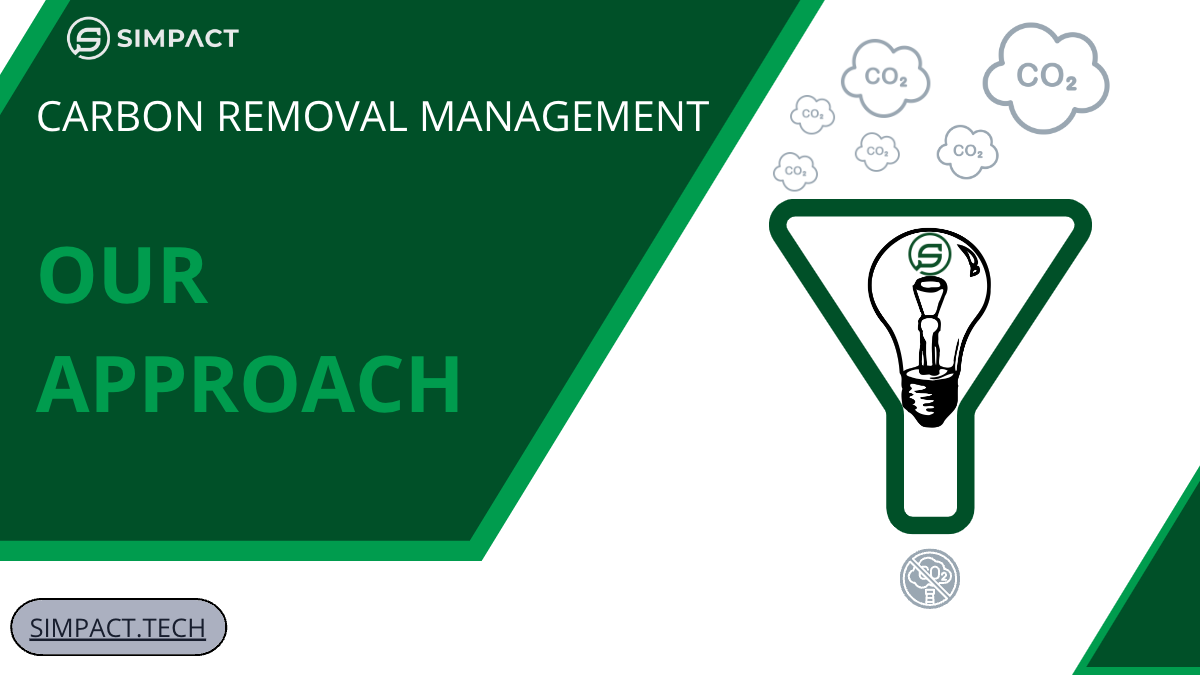Leveraging the Weighted Pipeline Methodology to Measure Progress and Impact of Carbon Removal Initiatives
Introduction
As companies worldwide focus on reducing their carbon footprint and becoming more sustainable, the importance of carbon removal management has never been greater. The need for a structured and transparent approach to managing and tracking the progress of carbon removal projects is essential. This article introduces an adapted version of the weighted pipeline methodology, traditionally used in sales, for Carbon Removal Management. Similar to a typical sales pipeline approach in a Customer Relationship Management approach the weighted average method is used. This approach provides a clear understanding of the expected emissions saved at each stage of carbon removal projects and offers better transparency into the progress of these initiatives.
Wait but why is that important? At Simpact, we believe that every ton of CO2 will be a hard currency in the future and the value will go up significantly, since it is deflationary.
The amount of carbon emissions we help our clients save is the driving factor of our business. We want to help save 10 Million tons of CO2 equivalents by 2027.
Normally, we’d focus solely on prospected revenue and prioritize accordingly. However, we believe CO2-Emissions will be an even harder currency as today, which is why we see it as an anticipated investment for our clients.
So, here it comes, the Weighted Pipeline Methodology for Carbon Removal Management:
We propose the following stages and associated weighted probabilities for carbon removal projects:
- Opportunity Won – 5%
- Implementation Start – 10% (e.g., heat pumps ordered)
- Implementation half way implemented – 50% (e.g., 2/4 heat pumps installed and fully operational)
- Project Fully Implemented – 100% (e.g., 4 heat pumps operational)
Here’s how to apply the methodology to carbon removal projects:
Step 1: Identify Projects and Stages
For each carbon removal project in your company, identify its current stage. The stages, as defined above, are:
- Opportunity Won
- Implementation Start
- Implementation Implemented to 50%
- Project Fully Implemented
Step 2: Estimate Emissions Saved
For each project, estimate the total potential emissions saved (in metric tons of CO2 equivalent) if the project is fully implemented.
Step 3: Calculate Weighted Emissions Saved
Multiply the potential emissions saved for each project by the assigned probability for its current stage. This will give you the weighted emissions saved for each project.
Step 4: Summarize Results
Add up the weighted emissions saved for all projects in each stage, as well as for the entire pipeline. This will give you an overall picture of the expected emissions saved at each stage and across the entire Carbon Removal Management pipeline.
Step 5: Track and Update
Regularly update the pipeline with new projects, stage changes, and revised emissions saved estimates to maintain transparency and provide an accurate picture of the Carbon Removal Management pipeline’s performance.
Example for a subscription model:
The Enabling Impact of the „Subsidy Radar„: the main features are to identify suitable subsidy programs for companies and to make sure money gets wired to the customer account at the end of the day.
For a typical subscription, the „Subsidy Radar“ helps companies obtain an average of 2.5 subsidy programs per year. Each subsidy program, on average, saves about 730 tons of CO2e when implemented. About the average what 73 Germans People emit per year (around 10 tons per person). The „Subsidy Radar“ is considered a 10% enabler of the implemented projects, meaning it contributes to 10% of the total emissions savings. Additionally, about 65% of the granted subsidy projects get implemented.
Calculating the Emissions Savings Enabled by the „Subsidy Radar“
Let’s apply these numbers to calculate the emissions savings enabled by the „Subsidy Radar“ for a sample manufacturing company with 500 employees.
- Calculate the total emissions savings from granted subsidy projects:
- Total Emissions Savings = Number of granted projects * Average emissions savings per project
- Total Emissions Savings = 2.5 * 200 tons = 500 tons of CO2e
- Calculate the implemented emissions savings:
- Implemented Emissions Savings = Total Emissions Savings * Implementation Rate
- Implemented Emissions Savings = 500 tons * 65% = 325 tons of CO2e
- Calculate the emissions savings enabled by the „Subsidy Radar“:
- Enabled Emissions Savings = Implemented Emissions Savings * Enabling Percentage
- Enabled Emissions Savings = 325 tons * 10% = 32.5 tons of CO2e
So, in this example, the „Subsidy Radar“ helps the sample company enable an emissions reduction of 32.5 tons of CO2e per year.
Conclusion
Adopting the Carbon Removal Management approach using the weighted pipeline methodology can help companies like Simpact or sustainability consulting companies or system builders or others measure the progress and impact of their carbon removal projects more effectively. By providing clear insights into the expected emissions saved at each stage of a carbon removal project, this methodology enables companies to make informed decisions and align resources to achieve their sustainability goals.
Disclaimer: non of the emissions saved will ever be listed in the Simpact carbon balance sheet or claimed in the corporate carbon footprint. It’s main purpose is to focus impact on where it matters most.

